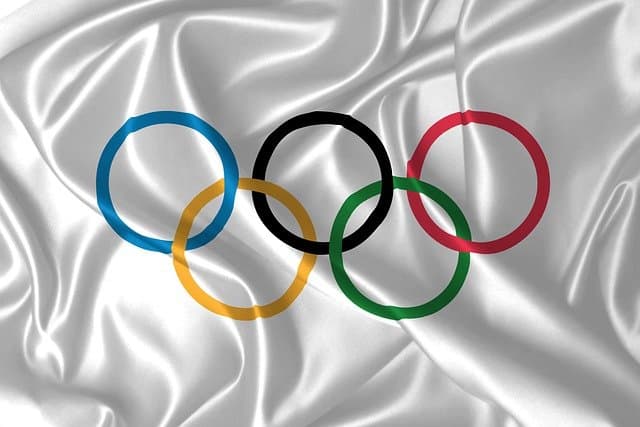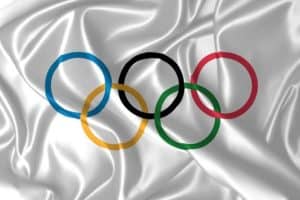
14
JunRooting for Women at the Olympics
 One of the things I was looking forward to in 2020 was the Summer Olympics. I wasn’t allowed to watch a lot of TV growing up but my mom made an exception for the Olympics. I loved the spectacle of the opening ceremonies and learning about the athletes and their home countries. During the summer there was no school to interfere during the day or prevent me from staying up late. Watching the 1984 Summer Olympics in our tv room with the shades drawn to keep out the heat is a fond memory. The 1998 Summer Olympics were after school started in September but the 1984 and 1988 Winter Olympics were over February vacation so I spent a lot of time watching them.
One of the things I was looking forward to in 2020 was the Summer Olympics. I wasn’t allowed to watch a lot of TV growing up but my mom made an exception for the Olympics. I loved the spectacle of the opening ceremonies and learning about the athletes and their home countries. During the summer there was no school to interfere during the day or prevent me from staying up late. Watching the 1984 Summer Olympics in our tv room with the shades drawn to keep out the heat is a fond memory. The 1998 Summer Olympics were after school started in September but the 1984 and 1988 Winter Olympics were over February vacation so I spent a lot of time watching them.
There have been many books written about the Olympics in general and American athletes specifically. Three about Americans who competed in the 1936 Berlin Olympics were quite popular, The Boys in the Boat: Nine Americans and Their Epic Quest for Gold at the 1936 Berlin Olympics by Dan Brown, Fast Girls: a Novel of the 1936 Women’s Olympic Team by Elise Hooper and Unbroken: a World War II Story of Survival, Resilience, and Redemption by Laura Hillenbrand. Unbroken, which was made into a movie, is primarily about Louis Zamperini’s time as a Japanese prisoner of war, but it also covers his competition in the 1936 Olympics. These books feature athletes who had not spent their lives participating in or perfecting a sport, which is quite different from the athletes we see competing today. Most began training and competing for a spot on the U.S. team for the first time less than four years after they began participating in the sport. Learning about these athletes led me to think about how the “Modern Olympics” have changed over the past 125 years, particularly for women.
Title IX was signed into law by President Richard Nixon in 1972. It states, “No person in the United States shall, on the basis of sex, be excluded from participation in, denied the benefits of, or be subjected to discrimination under any education program or activity receiving Federal financial assistance.” Title IX had a significant impact on sports opportunities for females at the high school and college level. In 1972, there were 31,000 female athletes participating in college sports in the United States; today there are over 200,000. The American women who participated in the Olympics before and immediately after the passage of Title IX found ways to pursue their interest in a given sport in spite of a lack of athletic opportunities for them. Nor did they have many female athlete role models; aside from tennis and golf there were only a few short-lived professional sports for women until the 1990s. Ironically, although tennis and golf were among the first Olympic sports for women in 1900 women’s golf was dropped after that year and not returned until 2016. Women’s tennis was dropped after 1924 and returned in 1988.
Since I am not athletic and women were competing in the sports I was primarily interested in watching: gymnastics (1928), swimming (1912), and diving (1912) in the summer, and figure skating (1908), and skiing (1936) in the winter, I didn’t think about how many sports they weren’t competing in. Like many girls my age I had a Dorothy Hamill style haircut for a while and I remember Mary Lou Retton on my Wheaties box after the 1984 Summer Olympics. The 1992 movie A League of Their Own introduced me to the All-American Girls Professional Baseball League of the 1940s. By the time the 1996 Olympics were held in Atlanta, I was much more aware of gender inequity for women in sports. In many ways women became the face of the 1996 U.S. Olympic team with gold medals won by the women’s basketball, gymnastics, soccer, and softball teams. Soccer and softball were new sports for women that year. Some viewers were aware that several of the members the basketball team would be playing professionally the following year in the recently created WNBA. America women also won individual gold, silver, and bronze medals and team gold medals in two swim relays, and two track and field relays.
As I always do when writing a column, I did some research. Four books I found very informative are: Outstanding Women Athletes: Who They are and How They Influenced Sports in America by Janet Woolum, Getting in the Game: Title IX and the Women’s Sports Revolution by Deborah L. Brake, The National Team: the Inside Story of the Women who Changed Soccer by Caitlin Murray, and for younger readers Grace and Glory: a Century of Women in the Olympics edited by Siobhan Drummond and Elizabeth Rathburn. Fire on the Track: Betty Robinson and the Triumph of the Early Olympic Women by Roseanne Montillo provides a non-fiction account of the story told in Fast girls. I also found the Olympics and NCAA websites informative though difficult to navigate.
Track and field, which was Betty Robinson’s sport, was added in 1928. However, when several competitors collapsed after the 800-meter race, an Olympic ban on women’s races of longer than 200 meters was instituted for many years. Women’s volleyball was added in 1964, basketball and rowing in 1976, field hockey in 1980, cycling and marathon in 1984, and ice hockey in 1998. I was also curious about the number of competitors at various Summer Olympics. Overall numbers were sometimes not as large as I expected due to boycotts in the 1980s; the U.S and several Western European nations boycotted the 1980 Summer Olympics in Moscow and the USSR boycotted the 1984 Summer Olympics in Los Angeles. In 1912 there were 2,400 athletes, only 48 were women. In 1928, there were 2,800 athletes, 277 were women. In 1936, of 3,900 athletes, 331 were women. In 1972 just over 7,000 athletes competed, 1,000 of them were women. In 1984, of the almost 7,000 athletes, 1,500 were women. By 2016, of the 10,300 athletes, 5,000 were women.
I also looked at digitized copies of NHS yearbooks from some of the Olympic years between 1972 and 2016 to see how what sports are available to girls here in Norwood has changed. Tiot does not include spring sports so I was not able to learn about lacrosse, softball, or tennis. In 1972, there were girls’ teams for basketball, field hockey, gymnastics, and swimming. By 1980 soccer and volleyball had been added. Track and cross-country have been co-ed some years and separate other years. By 2004 swimming had become co-ed and there was a girl’s ice hockey team.
At the time of this writing the opening ceremonies of the 2021 Summer Olympics are scheduled for July 23 in Tokyo. Spectators from outside of Japan have been banned due to COVID-19 concerns and many countries have issued travel advisories for their athletes. It has been almost 50 years since Title IX was signed into law. Inequities remain for women in sports, particularly at the coaching level. Inequities exist at all levels for BIPOC and LGBTQ+ athletes. In recent years, athletes at the professional and collegiate levels have become more vocal about speaking out against the inequities they and their fellow competitors face.
Victoria Andrilenas is a Reference Librarian at the Morrill Memorial Library in Norwood, MA. Look for her article in the June 11, 2021 issue of the Transcript and Bulletin.








